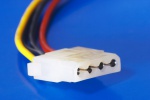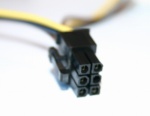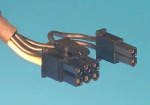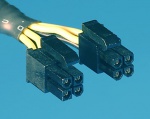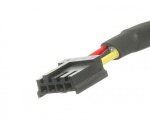We are still actively working on the spam issue.
Difference between revisions of "Build a PC"
| Line 58: | Line 58: | ||
However, 80 Plus Silver and higher-certificated power supplies are almost guaranteed to be of high quality, since it is much harder to achieve Silver efficiency than 'standard' 80 Plus efficiency. | However, 80 Plus Silver and higher-certificated power supplies are almost guaranteed to be of high quality, since it is much harder to achieve Silver efficiency than 'standard' 80 Plus efficiency. | ||
| − | === Efficiency level certifications === | + | ==== Efficiency level certifications ==== |
{| class="wikitable" | {| class="wikitable" | ||
! 80 Plus test type | ! 80 Plus test type | ||
Revision as of 14:44, 29 January 2014
Contents
Building a desktop
Building your own desktop allows for greater customisation and control. It's worth it even though it's harder.
Some common issues when building your PC
- Use standoffs under the motherboard mounting holes!
- Read the manual that came with your motherboard.
- Plug in all the power connectors.
- If you have a graphics card, connect your monitor to your graphics card and NOT to the motherboard
- Spread thermal paste however you feel like, use about half a pea size amount, if using the stock heatsink don't touch the preapplied stuff
- Install the CPU heatsink before putting the motherboard into the case, unless it's a water cooling setup.
- The CPU socket lever on Intel motherboards will be hard to push down and feel like it's taking too much force. That's normal.
Power supplies
Common power connectors and their usage
| 4-pin molex | 6-pin PCI-E | 6+2-pin PCI-E | 20+4-pin ATX | 4+4-pin ATX12V/EPS | 15-pin SATA | 4-pin floppy |
|---|---|---|---|---|---|---|
| Commonly used for fans and older drives. | Used for graphics cards. According to the ATX specification, it should not transmit more than 75W. |
Also used for graphics cards, but can (should) output up to 150W. | Used as the motherboard's main power source. Always plug in both parts. |
Used as the motherboard's secondary power source, but still required for the motherboard to work. When using 8 pins, it's called the EPS connector, but if only using 4 pins, it's ATX12V. |
The Serial ATA power connector is used for hard drives, SSDs and optical drives. | An obsolete connector, used for powering floppy drives. |
PSU Efficiency
The higher the power supply's efficiency is, the less energy it's going to convert to heat, and therefore, run cooler.
The standard for measuring efficiency is 80Plus, requiring tests at 10% (80+ Titanium only), 20%, 50% and 100% of rated load at both 115V and 230V.
Efficiency certifications can also be seen as a 'seal of approval' of a power supply quality, but one still shouldn't buy a PSU from an unreliable manufacturer such as Raptoxx or Diablotek even if it has an 80 Plus certification.
However, 80 Plus Silver and higher-certificated power supplies are almost guaranteed to be of high quality, since it is much harder to achieve Silver efficiency than 'standard' 80 Plus efficiency.
Efficiency level certifications
| 80 Plus test type | 115V internal non-redundant | 230V internal redundant | ||||||
|---|---|---|---|---|---|---|---|---|
| Percentage of rated load | 10% | 20% | 50% | 100% | 10% | 20% | 50% | 100% |
| 80 Plus | 80% | 80% | 80% | |||||
| 80 Plus Bronze | 82% | 85% | 82% | 81% | 85% | 81% | ||
| 80 Plus Silver | 85% | 88% | 85% | 85% | 89% | 85% | ||
| 80 Plus Gold | 87% | 90% | 87% | 88% | 92% | 88% | ||
| 80 Plus Platinum | 90% | 92% | 89% | 90% | 94% | 91% | ||
| 80 Plus Titanium | 90% | 92% | 94% | 90% | 90% | 94% | 96% | 91% |
Fan noise
As I already have mentioned, the higher the efficiency, the lower the fan noise.
However, if you're on a (very) tight budget, you should only buy a PSU with a 120mm or larger fan, since smaller fans are usually noisier since they have to transfer the same amount of air with a smaller blade diameter.
Still, a power supply with a variable-speed 80mm fan is probably going to be quieter (at least in idle) than a PSU with a fixed-speed 120mm fan.
You can check if the unit has a variable-speed fan on the manufacturer's website. (if it exists)
External Links
- PCPartPicker - Computer component aggregator and comparison tool dedicated to picking out compatible computer components, allowing one to seamlessly create a desktop.
- Logical Increments - Formerly known as the "Falcon Guide", a good starting point to building a computer on a budget, components are grouped by price point.
- ChooseMyPC.net - Cookie cutter PC build generator, also hosts several guides and resources related to builds.
